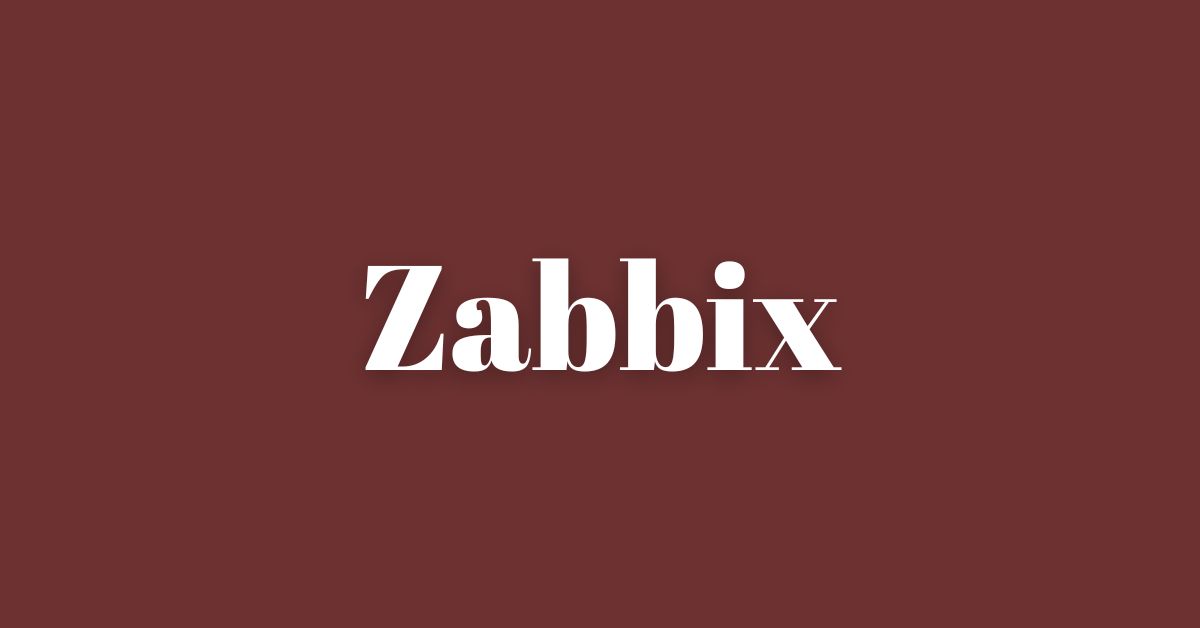|
Getting your Trinity Audio player ready... |
Changing the Zabbix URL can be a useful step for organizations that want to personalize their monitoring system. The default URL for Zabbix is usually set to an IP address or hostname followed by “/zabbix”. However, organizations may prefer to use a custom URL that reflects their brand or makes it easier for users to access the Zabbix frontend. In this article, we will explore how to change the Zabbix URL and the different factors to consider before making the change.

The process of changing the Zabbix URL involves modifying the Apache or Nginx configuration files that are used to serve the Zabbix frontend. Depending on the web server used, the steps may vary slightly. It is recommended to make a backup of the configuration files before making any changes. Additionally, it is important to ensure that the new URL is available and does not conflict with any existing URLs in the organization’s network. This can be done by checking with the IT department or network administrator. Once these factors have been considered, the steps to change the Zabbix URL can be followed.
Understanding Zabbix

Overview of Zabbix
Zabbix is an open-source monitoring software tool that is used for monitoring various network devices, servers, and applications. It is designed to provide real-time monitoring of the performance and availability of IT infrastructure components. Zabbix supports a wide range of monitoring options, including SNMP, JMX, IPMI, and more.
Zabbix provides a centralized interface for monitoring and managing the IT infrastructure. It allows administrators to monitor the performance of their systems, applications, and network devices in real-time. Zabbix also provides alerts and notifications when any issues arise, allowing administrators to take immediate action to resolve them.
Components of Zabbix
Zabbix is composed of various components that work together to provide a comprehensive monitoring solution. These components include:
- Zabbix Server: The Zabbix server is the central component of the monitoring system. It collects data from the monitored devices and stores it in a database. It also processes the data and generates alerts and notifications.
- Zabbix Agents: The Zabbix agent is a small program that is installed on the monitored devices. It collects data from the device and sends it to the Zabbix server for processing.
- Zabbix Web Interface: The Zabbix web interface is a graphical user interface that allows administrators to monitor and manage the IT infrastructure. It provides real-time monitoring of the performance of the IT infrastructure components and allows administrators to configure alerts and notifications.
- Zabbix Proxy: The Zabbix proxy is an optional component that can be used to distribute the monitoring load across multiple Zabbix servers. It can also be used to monitor remote sites that are not directly accessible from the main Zabbix server.
Zabbix change frontend URL
To change the frontend URL of Zabbix, administrators can follow the steps provided in the official Zabbix documentation. The process involves modifying the Apache configuration file and restarting the Apache service.
Once the Apache configuration file is modified, the Zabbix web interface can be accessed using the new URL. It is important to note that changing the frontend URL of Zabbix may affect the functionality of some features, such as the Zabbix API, and may require additional configuration changes.
Overall, Zabbix provides a comprehensive monitoring solution for IT infrastructure components. Its various components work together to provide real-time monitoring and management of the IT infrastructure. Administrators can change the frontend URL of Zabbix by following the steps provided in the official documentation.
Preparation for URL Change

Before changing the URL of Zabbix frontend, it is important to make sure that the current configuration is backed up and all the prerequisites are met. This ensures that any issues that may arise during the process can be easily resolved without losing any important data. This section will cover the necessary steps to prepare for a URL change in Zabbix.
Backup Current Configuration
The first step in preparing for a URL change in Zabbix is to backup the current configuration. This can be done by exporting the current configuration to a file, which can be used to restore the configuration in case something goes wrong during the URL change process.
To export the current configuration, follow these steps:
- Log in to the Zabbix frontend as an administrator.
- Navigate to the “Administration” section and select “Export”.
- Select the configuration items that need to be exported and click on “Export”.
- Save the exported configuration file to a safe location.
Prerequisites for Changing URL
Before changing the URL of Zabbix frontend, make sure that the following prerequisites are met:
- The new URL should be a valid URL that can be resolved by DNS.
- The Zabbix server and frontend should be running on the same host.
- The Zabbix server and frontend should be stopped before changing the URL.
- The Zabbix server and frontend should be started after changing the URL.
It is also recommended to inform all the users about the URL change to avoid any confusion or disruption in the workflow.
By following these steps, one can safely prepare for a URL change in Zabbix without losing any important data.
Changing Zabbix Frontend URL

Zabbix is a popular open-source monitoring software that provides a web interface to monitor network resources. By default, Zabbix is installed with a URL that includes the /zabbix path. In some cases, system administrators may want to change the Zabbix frontend URL to a custom URL. This section describes the steps to change the Zabbix frontend URL.
Modify Zabbix Server Config
First, modify the zabbix_server.conf configuration file to reflect the new frontend URL. The zabbix_server.conf file is located in the /etc/zabbix/ directory. Open the file in a text editor and locate the FrontendURL parameter. Uncomment the line and update the parameter with the new URL. Save the file and exit the text editor.
# /etc/zabbix/zabbix_server.conf
FrontendURL=https://new-url.com
Update Apache Configuration
Next, update the Apache configuration file to reflect the new frontend URL. The Apache configuration file is located in the /etc/httpd/conf.d/ directory. Open the file in a text editor and locate the Alias directive. Update the path to reflect the new URL. Save the file and exit the text editor.
# /etc/httpd/conf.d/zabbix.conf
Alias /new-url /usr/share/zabbix
Restart the Apache service to apply the changes.
systemctl restart httpd
Adjust Zabbix PHP Configuration
Finally, adjust the Zabbix PHP configuration to reflect the new frontend URL. The PHP configuration file is located in the /etc/php.ini directory. Open the file in a text editor and locate the date.timezone parameter. Uncomment the line and update the parameter with the appropriate timezone. Save the file and exit the text editor.
# /etc/php.ini
date.timezone = America/New_York
Restart the Zabbix server service to apply the changes.
systemctl restart zabbix-server
In conclusion, changing the Zabbix frontend URL requires modifying the zabbix_server.conf configuration file, updating the Apache configuration file, and adjusting the Zabbix PHP configuration file. With these steps, system administrators can customize the Zabbix frontend URL to their liking.
Verification and Testing

After changing the Zabbix URL, it is essential to verify that the new URL is accessible and working correctly. This section will cover the steps to verify the new URL access and troubleshoot common issues.
Verify New URL Access
To verify the new URL access, follow the steps below:
- Open a web browser and enter the new URL in the address bar.
- If the new URL is accessible, the Zabbix login page should appear.
- Enter the login credentials to access the Zabbix dashboard.
- Once logged in, navigate through the different sections of the Zabbix dashboard to ensure that everything is working correctly.
Troubleshoot Common Issues
If the new URL is not accessible or if there are issues with accessing the Zabbix dashboard after changing the URL, follow the steps below to troubleshoot common issues:
- Check the Zabbix configuration file to ensure that the new URL is correctly configured.
- Verify that the web server is configured to point to the correct directory and that the Zabbix files are present in that directory.
- Check the web server logs for any errors or issues that may be preventing access to the Zabbix dashboard.
- Verify that the DNS settings are correctly configured to point to the new URL.
- Ensure that the firewall settings are not blocking access to the new URL.
By following the above steps, it should be possible to verify the new URL access and troubleshoot common issues that may arise after changing the Zabbix frontend URL.
Post-Change Configuration

Once the Zabbix URL has been changed, there are a few additional steps that need to be taken to ensure that everything is running smoothly. This section will cover the necessary post-change configuration steps.
Update Connected Services
After changing the Zabbix URL, any services that are connected to Zabbix will need to be updated with the new URL. This includes any monitoring agents, scripts, or other services that are dependent on Zabbix. Failure to update these services could result in errors or other issues.
To update connected services, simply modify any configuration files or settings that reference the old Zabbix URL and replace it with the new URL. If you are unsure where to make these changes, consult the documentation for the specific service or contact the vendor for assistance.
Inform Users of Change
It is important to inform all users of the Zabbix system that the URL has been changed. This can be done via email or other communication methods. It is also a good idea to include instructions on how to access the new URL and any other relevant information.
If users are not informed of the change, they may experience confusion or difficulty accessing the system. This could result in lost productivity or other issues.
Overall, changing the Zabbix URL is a straightforward process that can be completed with minimal disruption to the system. By following these post-change configuration steps, you can ensure that everything is running smoothly and all users are informed of the change.
Best Practices for URL Management

When it comes to managing URLs, there are a few best practices that can help ensure the smooth operation of Zabbix. These practices include documenting changes and regularly updating software.
Document Changes
One of the most important best practices for URL management is to document any changes made to the Zabbix frontend URL. This includes changes to the domain name, subdomain, or any other part of the URL. By documenting changes, administrators can keep track of what changes have been made and when they were made. This can be especially helpful when troubleshooting issues that arise with the Zabbix frontend.
Regularly Update Software
Another best practice for URL management is to regularly update the Zabbix software. By keeping the software up to date, administrators can ensure that they are using the latest version, which may include bug fixes and security updates. This can help prevent security vulnerabilities and ensure that the Zabbix frontend is running smoothly.
In addition to these best practices, there are a few other tips that can help with URL management in Zabbix. For example, administrators should ensure that the URL is easy to remember and easy to type. They should also avoid using special characters or symbols in the URL, as this can cause issues with some browsers.
By following these best practices and tips, administrators can ensure that the Zabbix frontend URL is managed effectively and efficiently. This can help prevent issues and ensure that the Zabbix monitoring system is running smoothly.
Frequently Asked Questions

How can I modify the port settings for Zabbix to use a different port than 80?
By default, Zabbix uses port 80 for web access. However, it is possible to modify the port settings to use a different port. To do this, you will need to modify the Apache configuration file. The exact location of the file may vary depending on your operating system and installation method. Once you have located the file, look for the line that specifies the port number (usually 80). Change this number to the desired port number and save the file. Restart the Apache service to apply the changes.
What steps are required to configure Apache for Zabbix?
To configure Apache for Zabbix, you will need to modify the Apache configuration file. The exact location of the file may vary depending on your operating system and installation method. Once you have located the file, look for the section that specifies the DocumentRoot and Directory settings for the Zabbix web interface. Make sure that the settings point to the correct location of the Zabbix frontend files. Additionally, you may need to modify other settings such as the port number, SSL settings, and access control settings. Save the file and restart the Apache service to apply the changes.
How can I set up an HTTP to HTTPS redirect for Zabbix?
To set up an HTTP to HTTPS redirect for Zabbix, you will need to modify the Apache configuration file. The exact location of the file may vary depending on your operating system and installation method. Once you have located the file, look for the section that specifies the VirtualHost settings for the Zabbix web interface. Add the following lines to the VirtualHost section:
RewriteEngine On
RewriteCond %{HTTPS} off
RewriteRule ^(.*)$ https://%{HTTP_HOST}%{REQUEST_URI} [L,R=301]
Save the file and restart the Apache service to apply the changes.
What is the process for setting up URL monitoring in Zabbix?
To set up URL monitoring in Zabbix, you will need to create a new item in the Zabbix web interface. Go to the “Configuration” section and select “Hosts”. Select the host for which you want to set up URL monitoring and click “Items”. Click “Create Item” and select “Zabbix Agent (Active)” as the type. Enter a name for the item and specify the URL that you want to monitor. Save the item and wait for Zabbix to start monitoring the URL.
Where can I find and edit the Zabbix frontend configuration file?
The Zabbix frontend configuration file is located in the Zabbix installation directory. The exact location of the file may vary depending on your operating system and installation method. Look for a file named “zabbix.conf.php”. You can edit this file using a text editor such as Notepad or Vim. Make sure to back up the file before making any changes.
How do I install and configure an SSL certificate for Zabbix?
To install and configure an SSL certificate for Zabbix, you will need to generate a certificate and key pair using a tool such as OpenSSL. Once you have generated the certificate and key pair, you will need to modify the Apache configuration file to enable SSL and specify the location of the certificate and key files. The exact location of the file may vary depending on your operating system and installation method. Once you have located the file, look for the section that specifies the SSL settings. Make sure to specify the correct paths to the certificate and key files. Save the file and restart the Apache service to apply the changes.
Understanding Redirect Code in HTML
Breaking Into The Industry: An Entry Level Guide for Front End Developers
PowerShell Parsing HTML: Simplifying Web Data Extraction
HTTP Status Code: Understanding the Basics
Mastering Access Control Lists
Arsalan Malik is a passionate Software Engineer and the Founder of Makemychance.com. A proud CDAC-qualified developer, Arsalan specializes in full-stack web development, with expertise in technologies like Node.js, PHP, WordPress, React, and modern CSS frameworks.
He actively shares his knowledge and insights with the developer community on platforms like Dev.to and engages with professionals worldwide through LinkedIn.
Arsalan believes in building real-world projects that not only solve problems but also educate and empower users. His mission is to make technology simple, accessible, and impactful for everyone.



